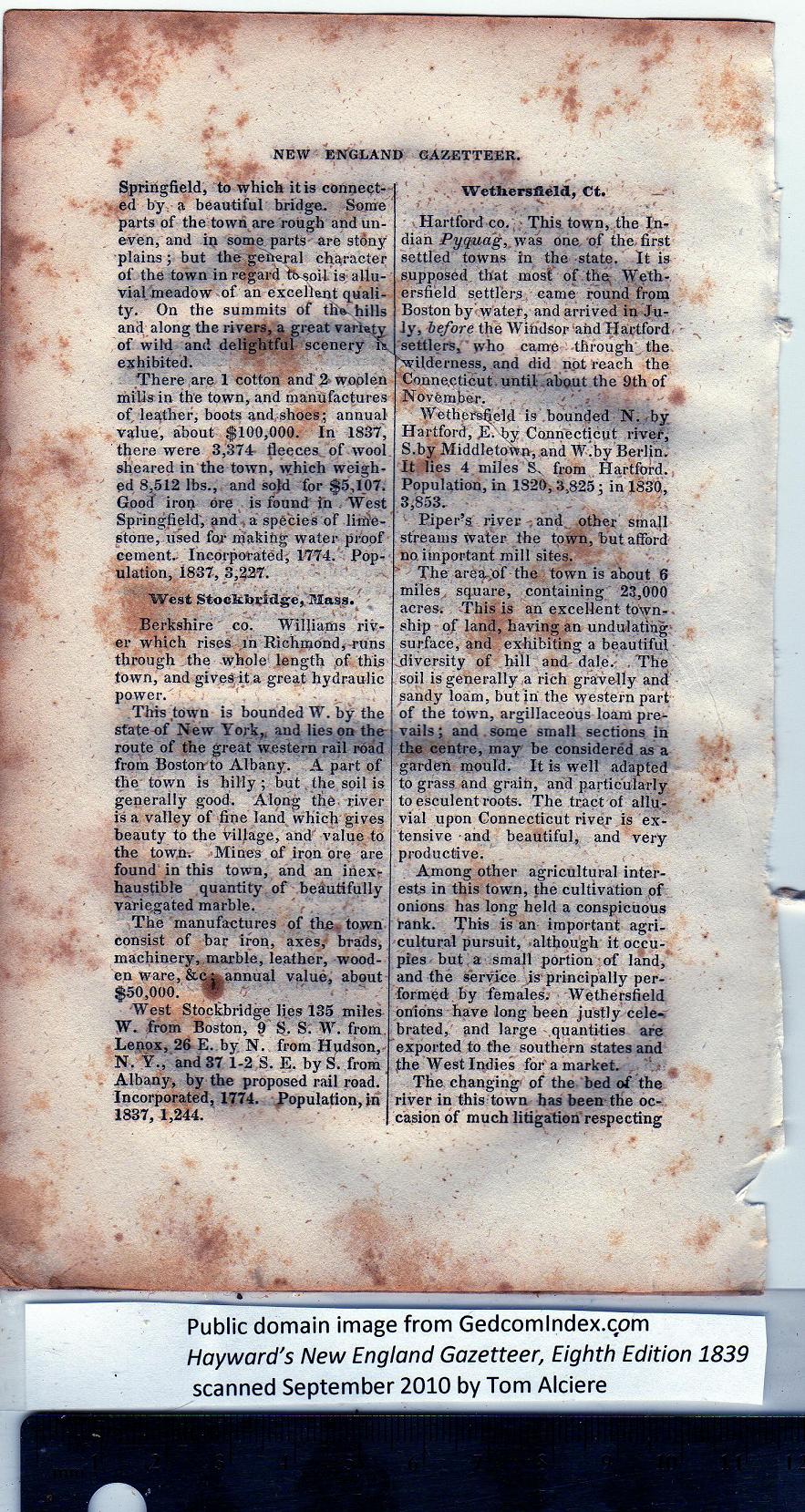|
Springfield, to which it is connect-
ed by a beautiful bridge. Sonie
parts of the town are rough and un-
even, and in some parts are stony
plains ; but the general character
of the town in regard tksoil is allu-
vial meadow of an excellent quali-
ty. On the summits of th^ hills
and along the rivers, a great variety
of wild and delightful scenery
exhibited.
There are 1 cotton and 2 woolen
mills in the town, and manufactures
of leather, boots and shoes; annual
value, about $100,000. In 1837,
there were 3,374- fleeces of wool
sheared in the town, which weigh-
ed 8,512 lbs., and so{d for $5,107.
Good iron ore is found In West
Springfield, and a species of lim'e-
stone, used for making water proof
cement.’ Incorporated, 1774. Pop-
ulation, 1837, 3,227.
West Stockbftdge, Mass.
Berkshire co. Williams riv-
er which rises in Richmond, runs
through the whole length of this
town, and gives it a great hydraulic
power.
This .town is bounded W. by the
state of New York,, and lies on the
route of the great western rail road
from Bostoirto Albany. A part of
the town is hilly ; but the soil is
generally good. Along the river
is a valley of fine land which gives
beauty to the village, and value to
the town. Mines of iron ore are
found in this town, and an inex-
haustible quantity of beautifully
variegated marble.
The manufactures of the. town
consist of bar iron, axes, brads,
machinery, marble, leather, wood-
en ware, &c ^annual value, about
$50,000. ^
West Stockbridge lies 135 miles
W. from Boston, 9 S. S. W. from.
Lenox, 26 E. by N. from Hudson,
N. Y., and 37 1-2 S. E. by S. from
Albany, by the proposed rail road.
Incorporated, 1774. Population, in
1837, 1,244. |
Wethersfield, Ct.
Hartford co. This town, the In-
dian Pyquag, was one. of the first
settled towns in the state. It is
supposed that most of thes Weth-
ersfield settlers came round from
Boston by water, and arrived in Ju-
ly, before the Windsor and Hartford
settlers, who came through the
'wilderness, and did not reach the
Connecticut , until about the 9th of
November.
Wethers^eld is bounded N. by
Hartford, by Connecticut river,
S.by Middletown, and W.by Berlin.
It lies 4 miles S, from Hartford.
Population, in 1820,3,825; in 1830,
3,853.
Piper’s river and other small
streams water the town, but afford
no. important mill sites.
' The area^of the town is about 6
miles square, containing 23,000
acres. This is an excellent town-
ship of land, having an undulating-
surface, and exhibiting a beautiful
diversity of hill and dale. . The
soil is generally a rich gravelly and
sandy loam, but in the vpestern part
of the town, argillaceous loam pre-
vails ; and some small sections in
the centre, may be considered as a
garden mould. It is well adapted
to grass and grain, and particularly
to esculent roots. The tract of allu-
vial upon Connecticut river is ex-
tensive and beautiful, and very
productive.
Among other agricultural inter-
ests in this town, the cultivation of
onions has long held a conspicuous
rank. This is an important agri-
cultural pursuit, although it occu-
pies but a small portion of land,
and the service is principally per-
formed by females. Wethersfield
onions have long been justly cele-
brated, and large quantities are
exported to the southern states and
the West Indies for a market.
The changing of the bed of the
river in this town has been the oc-
casion of much litigation respecting |
